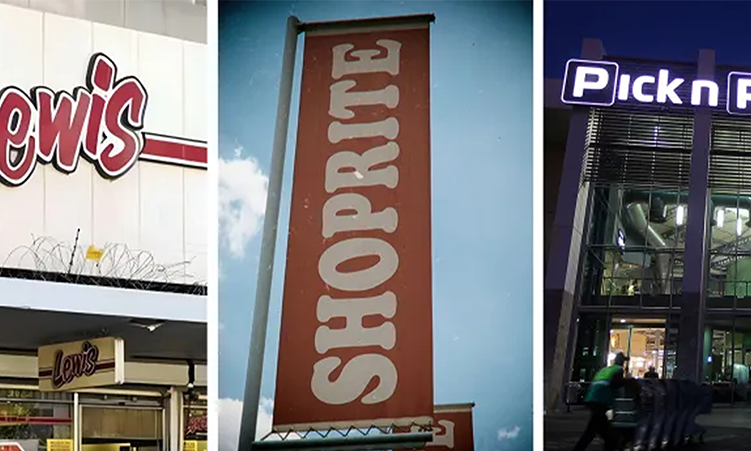Grocery retail is a competitive bloodbath.
It’s brutal, yet so much of the pain happens gradually in the background.
It’s about the small changes to gross margin, driven by a more efficient retailer being consistently cheaper than a less efficient retailer, thereby winning more market share and customer loyalty.
It’s about the volume rebates from suppliers that create a flywheel effect, making successful retailers more successful over time.
And, of course, it’s about the difference between opening stores and closing them. When a retailer is forced to walk away from trading space, another can jump in and become the go-to grocery store in the neighbourhood.
In the Pick n Pay versus Shoprite battle, we are watching this play out in our shopping centres.
At Shoprite, double-digit growth remains the flavour. It achieved sales growth of 10.4% for the quarter ended September and opened a net 68 stores.
The core Supermarkets RSA segment is still the key, up 11.4% for the period.
Although this is a bit slower than last year, inflation has calmed down, and this affects growth rates.
The other strong growth rate worth highlighting is sales to OK franchises, up 13.6% after growing an impressive 22% in the base period.
Supermarkets Non-RSA grew 3.2% in rand, a reminder of why Shoprite trimmed its ambitions on the rest of the continent.
Any of these growth rates would be a dream for Pick n Pay, where the highlight in an awful set of numbers for the core Pick n Pay business is that company-owned supermarkets achieved like-for-like growth of 3.1%.
Yes, that’s slower than Shoprite’s growth in the rest of Africa, translated to rand.
Boxer is by far the best business in the Pick n Pay group, which is why it is using that asset to raise between R6 billion and R8 billion by selling part of the stake to institutional investors.
The separate listing of Boxer is expected to be concluded this year. With turnover growth of 12% for the six months, Boxer is growing even faster than Shoprite’s Supermarkets RSA.
Tempting as it may be to suggest that some of Boxer’s success can be copied at Pick n Pay to achieve a turnaround, the two businesses have already been in the same group for several years.
They have completely different strategies, one of which is working beautifully and one of which is failing. I am not bullish at all on a Pick n Pay recovery.
It needs to turn the Titanic around, and the iceberg isn’t far away.
Lewis gives the market something to celebrate.
You wouldn’t think that selling furniture is the road to riches, yet here we are with Lewis putting out fantastic numbers.
This is consumer discretionary retail in its purest form, with Lewis loving every minute of a cocktail of Government of National Unity sentiment and the disappearance of load-shedding.
Consumers are feeling more confident when it comes to major purchases for their homes, and Lewis is only too happy to grease the wheels of its business by selling on credit.
Like all consumer discretionary business models, Lewis does really well when things are good and has the potential to do poorly when things are bad.
What makes it exceptional is that the management team always manages to make the bad times look better than they should.
So, it stands to reason that the management team is well placed to take full advantage of conditions that are expected to keep improving.
For the six months to September, Lewis is off to a terrific start with Heps growth of between 45% and 55%.
The share price is up a spectacular 71% year to date.
Who says furniture retail is boring? – Daily Maverick
Stay informed with The Namibian – your source for credible journalism. Get in-depth reporting and opinions for
only N$85 a month. Invest in journalism, invest in democracy –
Subscribe Now!






